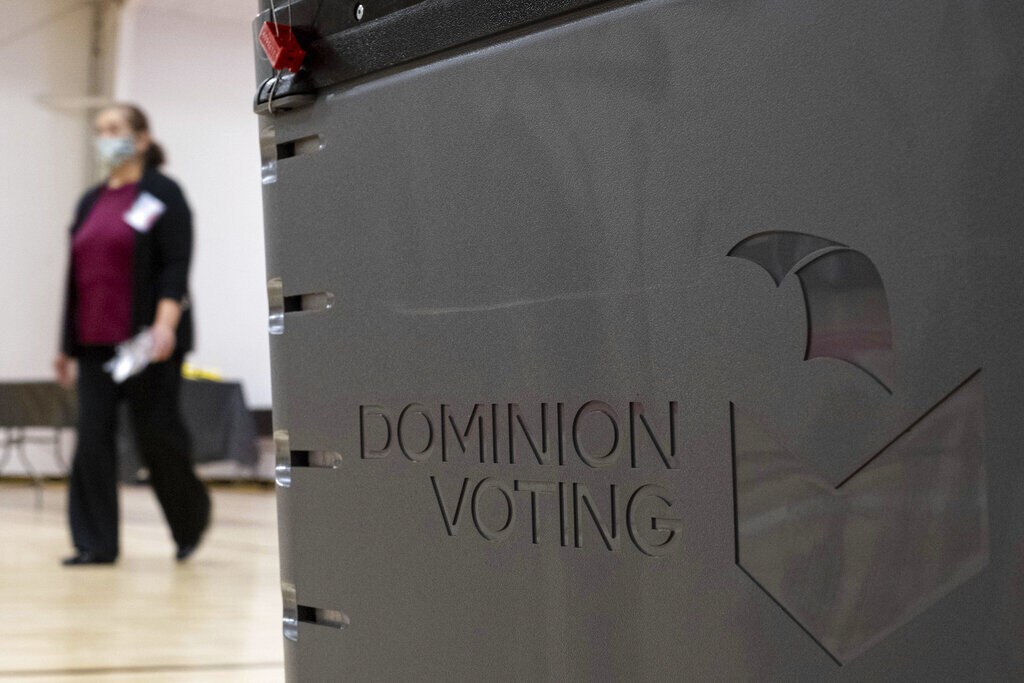SONDERMANN | How to watch the election returns like a pro


Eric Sondermann
For those anticipating election night (and who among readers of this column is not), let me recommend a television and a laptop, a comfortable chair and an extra few shots of caffeine. You’ll need them, along with a healthy dose of patience accompanied by my insight on what to look for and what to tune out.
No surprise, this election will be unlike any we have seen before, due to the massive change in the manner of voting. And because this is 2020 and, well, everything is different this year.
Just four years ago, less than 21% of all votes across the country were cast by mail-in methods. That includes states like Colorado and a few others where voting-by-mail has been a decade-long norm along with absentee voting as allowed in all states.
That 21% in 2016 was up from under 8% as recently as 1996. Still, that practice of four out of five Americans showing up to vote the old-fashioned way, in person on Election Day, will be forever changed as a result of this year.
Already as of this writing, over 75 million Americans have cast their ballot through the mail or by some other early voting procedure. Over the denominator of roughly 129 million total votes cast between Donald Trump and Hillary Clinton (plus another 6 million for other candidates), that is well over 55% of the total 2016 vote already in the bank.
Total turnout this year will certainly be higher than four years ago, perhaps dramatically so. But another 20 million or more votes will be cast before next Tuesday rolls around. That early voting number, overwhelmingly by mail, could be in the vicinity of 100 million ballots.
Of course, a different voting methodology dictates a different counting process. It is simply more time consuming to tabulate this mass of mail-in votes, especially for states without the systems and experience of Colorado.
Hence, patience.
We are unlikely to know everything Tuesday night, but we may well know much. Florida and North Carolina, both states Trump carried in 2016, are expected to report before the night gets too late. If Biden wins either state, much less both, he is likely headed to victory. Trump’s path to 270 electoral votes is a narrow one. If he loses states that he previously won, the path gets even more difficult. Because this race centers on national issues and states do not exist in a vacuum, it would be a strong indication that the tide is against him.
On the other hand, if Trump holds serve in Florida and North Carolina, it is a sign of a closer election, though with Biden still having some advantage assuming polling in Rust Belt states is even somewhat accurate.
Let’s turn eyes to Georgia, which is touting a fast vote-count capability and hopes to report meaningful results Tuesday night. The notion of Georgia as a swing state meriting visits from both candidates is completely new. It may well prove a fanciful bridge too far for Democrats. However, if Biden carries this “Empire State of the South,” it is proof positive of a national landslide. Game, set, match. Even if Biden loses the state but runs within a few points, it bodes well for his chances.
Arizona is another highly watched state that could report rather quickly. Much the same applies here. It has been a historically red state, though softening, and Trump carried it by nearly four points last time. Biden is leading in the polls. A Biden win here significantly constricts Trump’s electoral path to 270. If Biden prevails in both Arizona and Florida, he can start measuring drapes, and talking heads (myself included) can speculate on if and how Trump will concede.
Ohio will be often mentioned Tuesday night. It is an essential part of electoral college arithmetic for any Republican candidate, especially this one. Between Ohio and Florida, if Trump loses one, he is in deep trouble. If he loses both, he is toast.
Beyond its own 18 electoral votes, Ohio can be a tool in extrapolating what is likely happening in Pennsylvania, Michigan and Wisconsin – the supposed “blue wall” trio that deserted Hillary Clinton and effectively produced the Trump presidency. Each of those three are expected to be on the slow side of tabulation and reporting.
Ohio’s demographics are similar to its three Upper Midwest neighbors. But it has become a far more reliable shade of red; Trump carried it last time by a full eight points.
The assessment here is that Biden will run at least six points better in Pennsylvania, Michigan and Wisconsin than he does in Ohio. If the Trump margin in Ohio is six points or less, much less if Biden wins the state, those other three states that were so decisive four years ago are as good as gone for the president.
A number of these states also host pivotal Senate races. Between early-reporting Colorado, Arizona and North Carolina, you have three of the top four states Democrats have targeted to take control of that chamber. The fourth is the Susan Collins seat in Maine. Democrats need a net gain of four seats, assuming their likely loss in Alabama. If Colorado and Arizona tip (both highly likely) along with North Carolina (closer), Democrats will be nearly there. If a Republican incumbent in a redder state runs poorly, say Joni Ernst in Iowa, it is a sign that Democrats may emerge with well more than their baseline goal.
While we are at it, let us hope that Iowa is more efficient in reporting election results than its Democratic Party was on caucus night.
Of course, in each of these states, there are specific counties, even precincts, to watch as bellwethers. Much as Jefferson County has long been the key indicator here in Colorado. But that is a still more advanced lesson.
Two final cautions: Beware of premature and self-serving victory claims, especially if their origins are partisan. Wait for an Associated Press call. Or, say, a combination of FOX and NBC.
Further, resist naked attempts to skew or short-circuit the counting process. Per much commentary, the political complexion of voters showing up in-person on Tuesday might be quite different than those who voted early. In many cases, those Election Day votes may be counted sooner. But so what? All votes, regardless of how and when cast, count the same and all will be tallied in good time. Hopefully, sooner as opposed to later.
Happy viewing. We will know soon enough.
Eric Sondermann is a Colorado-based independent political commentator. He writes regularly for ColoradoPolitics and the Denver Gazette. Reach him at EWS@EricSondermann.com; follow him at @EricSondermann. Find a selection of his columns here.
Colorado Politics Must-Reads:














